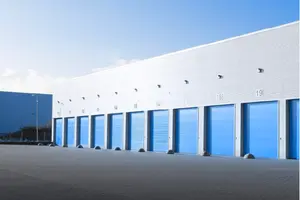Investing in self storage sounds like a great idea—if it’s done right. You might be wondering what goes into making a successful self storage investment. After all, achieving high returns on your investments is the goal, right? So let’s break down the components of what makes a great self storage investment and discuss how you can maximize your returns.
The good news is that there is some really good information out there to help get you started. We’ll cover the various factors that contribute to self-storage investment returns, such as occupancy rates, rental rates, and operating expenses. We’ll also explore the importance of location, market trends, and property management in maximizing your returns. By the end of this post, you should have a better understanding of how to make your self-storage investments as profitable as possible.
Introduction to Self Storage Investing
Investing in self-storage facilities is a great way to earn large returns on your investments. These facilities offer the potential for strong returns and can provide investors with a steady stream of revenue. But before you dive into this type of investment, it’s important to understand the costs and benefits associated with it.
The costs involved with self-storage investing include rentable spaces and fees for usage, which can add up depending on the size of the facility and the location. Additionally, there are operational costs such as maintenance and upkeep, staff salaries, insurance, taxes, marketing campaigns, and other expenses that can impact your returns. It’s important to factor these into your calculations when evaluating potential investments.
One of the advantages of investing in storage facilities is that they are often recession-proof—people will always need a place to store their belongings! Plus, unlike other investments, self-storage businesses offer customers a safe place to store goods for a fee. Finally, storage businesses tend to benefit from the increasing demand due to population growth or an influx of residents in an area due to economic development or job opportunities.
Key Metrics to Consider Before Investing in Self Storage
When you’re evaluating potential self-storage investments, there are several key metrics you should consider. The most important of these is the occupancy rate, which is a measure of how full the self-storage units currently are and a key indicator of future returns. A high occupancy rate typically indicates a healthy demand for storage and can be used to estimate expected returns.
Another important metric to consider is consumer demand. Evaluate market trends to determine if there’s an increasing need for storage solutions in the area. If so, then you can be confident that it will result in higher occupancy levels and greater returns for your investment.
Finally, have a look at the cap rate—the yield on capital invested—which will give you an idea of how well your money is working for you. It’s calculated by dividing the annual net operating income generated by the self-storage facility by its purchase price or current market value. A higher cap rate typically translates into more potential return on your investment.
The Role of Location & Market Trends
Clearly, your location will have a big impact on the success of your self-storage investment. It would be wise to consider market trends and rental prices before investing in a property. Rent prices vary greatly between expensive cities like San Francisco and New York, and costs in smaller cities could be substantially lower.
For example, rent prices for 2-bedroom units in San Francisco are currently at about $4,100 per month – that’s up 39.7% from 2019! On the other hand, rent prices for 2-bedroom units in Oklahoma City are around $875 per month – a far cry from the astronomical figures seen in large U.S. cities.
It’s important to research the local market and find out the average demand for storage units in the area you’re looking to invest in. Determine if there is any competition that could affect your business and create a competitive analysis to determine where a competitive advantage may exist.
You should also consider the demographics of the area. Are there a lot of single or large families that may need storage solutions? Are there any businesses or industries that may be a source of income for your storage units? All these factors should be taken into consideration when evaluating an investment opportunity.
As such, you’ll want to take into account your local market trends when selecting an investment property and setting your rental rates accordingly. Investment properties located in high-demand locations will likely generate higher returns than those located in more rural areas. Additionally, self-storage investments are often more successful during periods of economic expansion since people tend to move more often during these times.
Finally, you’ll also want to consider local laws and regulations regarding self-storage investments. Depending on the state or city, there may be specific rules and regulations that must be followed in order to legally operate a storage facility. Make sure to do your research to ensure that you are following all the applicable laws and regulations.
By researching the self-storage market, understanding the key metrics to consider, and taking into account local laws and regulations, you will be well-equipped to evaluate potential investments in self-storage and make decisions that will lead to profitable returns.
The Impact of Property Management on Returns
You might not know this, but property management is key to maximizing your returns when investing in self-storage. Property management companies are important partners in the success of a self-storage business. They are responsible for the day-to-day operations, including collecting rent, liaising with tenants, and managing the physical aspects of the property.
Expertise that Counts:
Property management firms have the expertise to maximize your investment return potential by driving occupancy rates, controlling operating expenses, and increasing rental rates. Their knowledge of local markets combined with years of experience can be a valuable asset to landlords navigating their business through labor and material shortages, increasing regulations, and other changes to the landscape.
ESG Considerations:
Environmental, social & governance (ESG) considerations have become increasingly important due to high demand from tenants and investors alike. Making sure that your property meets ESG standards can result in higher rent pricing due to competitive bidding from tenants; tax credits and incentives; and ultimately an increased market value of your properties.
Property management companies are critical partners when it comes to maximizing returns on your investments in self storage. Finding a partner that provides expertise in local markets as well as knowledge in ESG can provide you with better returns for your investment portfolio.
Strategies for Maximizing Your Investment Returns
When it comes to maximizing your self storage investment returns, it’s important to consider a few key strategies. Diversifying your investments is one of the best ways to reduce risk and maximize returns. Even if you’re primarily investing in self storage units, mixing in some alternative assets, non-correlating assets, stocks, ETFs, or mutual funds can help you maximize those returns into retirement.
You should also take a long-term view when investing in self storage. Buying and holding properties for the long term can provide better returns than flipping properties or buying and selling quickly. This strategy allows you to take advantage of appreciation over time and benefits from economies of scale in terms of management and other operating costs.
It’s important to use the right type of financing for your investments. Leveraged financing can help you achieve better returns but also comes with increased risk. Balance appropriate amounts of leverage with other modes of financing, such as non-recourse loans, to ensure optimal returns over the long term.
With the right strategies, savvy investors can unlock attractive returns from self storage investments. From optimizing your financing arrangements to partnering with experienced property management firms and running a diversified portfolio, there are many ways to maximize the returns on your investments.
Similarly, investing in low-cost index funds can help you achieve a well-diversified portfolio and maximize returns while minimizing risk. Lastly, buy-and-hold investing is a popular strategy that helps you ride out any market downturns and reap the rewards of any recoveries.
So in summary: diversify for lower risk and maximum returns; invest in low-cost index funds; and don’t forget about buy-and-hold investing!
Conclusion
In conclusion, Self Storage Investing is an attractive option for capital owners looking to diversify their portfolios with a steady return on their investments. By evaluating key metrics such as occupancy rates, rental rates, and operating expenses, you can ensure you are making the most of your self-storage investments. Location and market trends, as well as property management, play an important role in maximizing your returns. With the right strategies and information, you can maximize your self storage investing returns.
Вигідно взяти позику онлайн в Україні. Оформити онлайн заявку на позику на карту без історії і перевірок. Цілодобово, без довідок і перевірок.
Хочете взяти швидкий кредит онлайн на карту в Україні? Дуже просто, треба подати необхідні документи і чекати на результат МФО.





